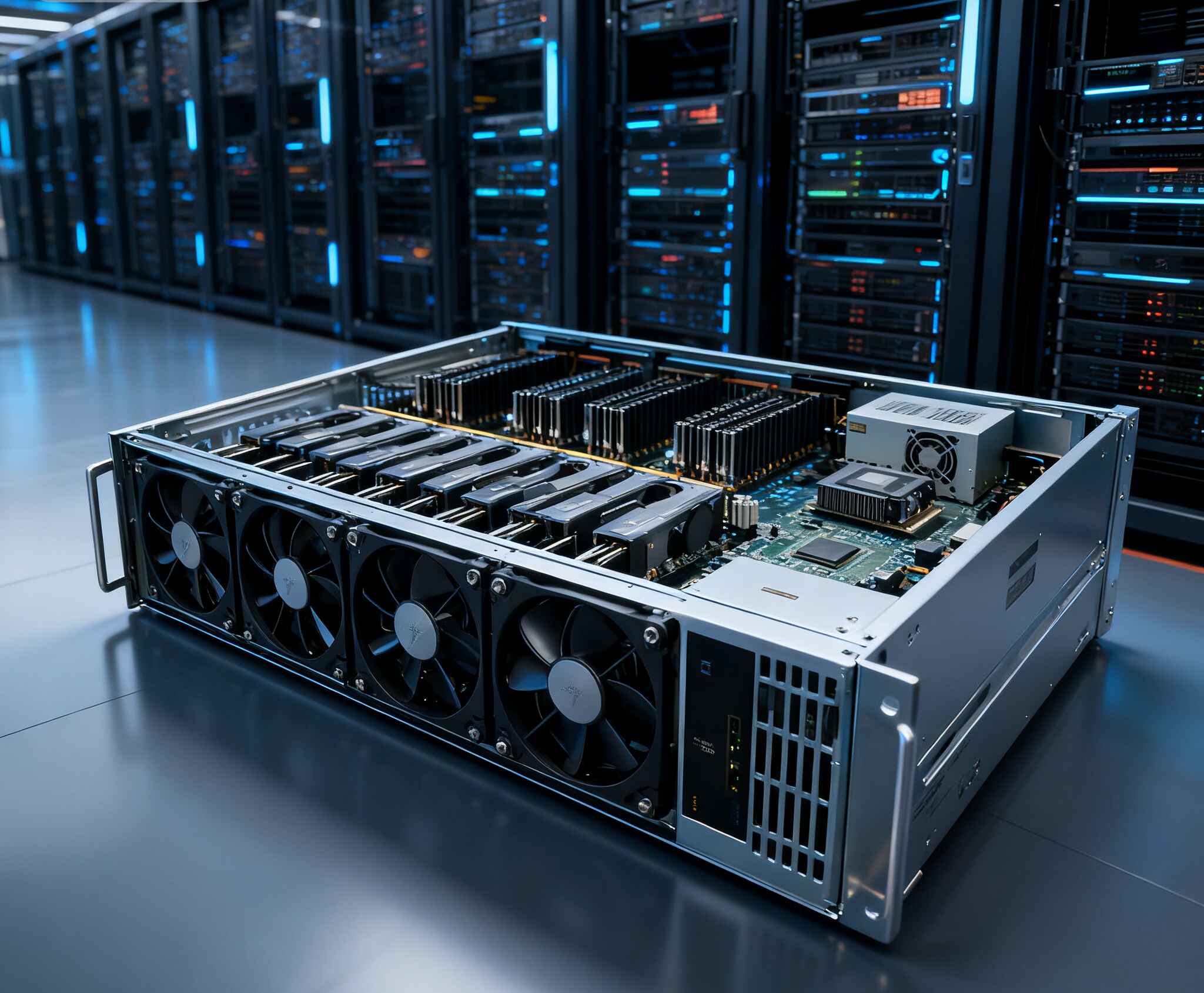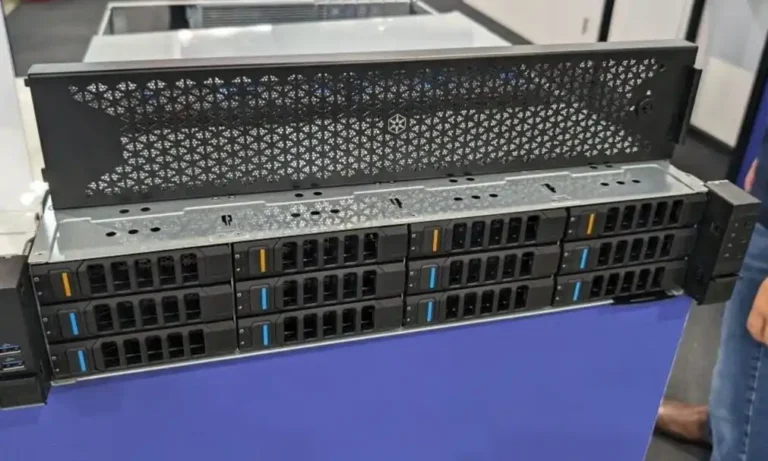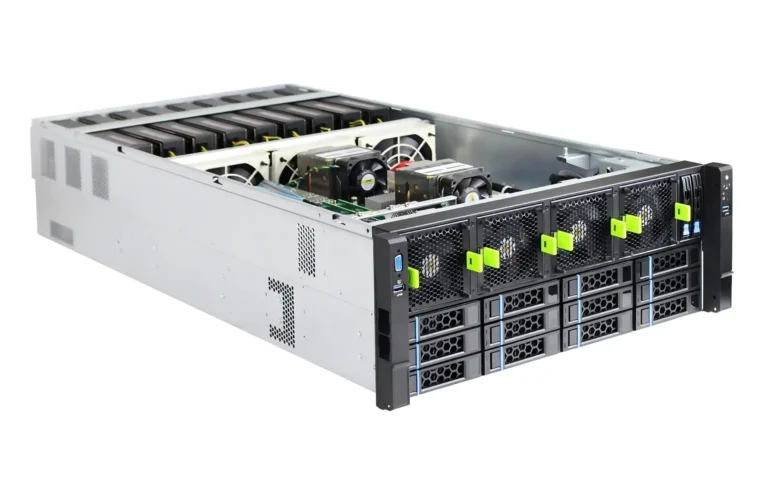You want an honest, field-tested way to pick a 4U GPU server case for multi-GPU training. Let’s keep it practical, keep it short-ish, and tie choices to real hardware signals, not vibes.
You’ll see links to IStoneCase categories and models so you can jump straight to options:
GPU Server Case • 4U GPU Server Case • 5U GPU Server Case • 6U GPU Server Case • ISC GPU Server Case WS04A2 • ISC GPU Server CaseWS06A • Customization Server Chassis Service
PCIe 5.0 x16 vs NVLink/NVSwitch (interconnect decides scale)
If you train with 4–8 PCIe GPUs and keep tensor parallel modest, a 4U chassis with PCIe 5.0 x16 per GPU is the sweet spot. It’s simple, it’s flexible, and cluster networking does the heavy lifting.
Need tighter coupling or unified memory? NVLink (and NVSwitch) is the next step. In a 4U footprint, NVLink usually means fewer SXM modules instead of eight PCIe cards. If you need true all-to-all GPU fabric, that often jumps you beyond standard 4U into special HGX-style systems. For most teams, PCIe Gen5 + fast fabric networking wins on cost-to-scale and delivery speed.
Tip: Match interconnect to the largest tensor you must shard. Over-buying NVLink when you mostly run data parallel feels cool on paper, isnt helpful in ops.
Dual-root topology & PCIe Gen5 switch fabric (fight contention)
Eight GPUs behind one CPU root complex choke under load. Look for dual-root designs or Gen5 PCIe switch backplanes that split GPUs across CPU NUMA domains. That gives you better locality, lower jitter, and cleaner I/O mapping for NICs and NVMe.
You’ll see this language in spec sheets: “dual-root,” “switch fabric,” “x16 per slot sustained.” If it doesn’t say it, ask. If the vendor can’t show a slot map, walk away.
OCP 3.0 networking (200–400G, IB or Ethernet)
Cross-node training lives or dies on network. A modern 4U should expose an OCP 3.0 slot (W1/W2) or enough FHFL x16 slots for 200–400G NICs or DPUs. InfiniBand is common in LLM shops. 400GbE works great too when paired with RoCE and sharp queue tuning.
Reality check: You dont need a fabric PhD. Start with one 200–400G NIC, profile, then scale out. Make sure the chassis gives you airflow for those hot NICs.
Fan wall vs direct-to-chip liquid (cooling is a design choice)
A 4U GPU chassis should use a high-static-pressure fan wall plus air shrouds that split CPU and GPU airflow. That’s standard. If your GPUs are higher-TDP parts or your room runs warm, spec direct-to-chip (D2C) cold plates from day one. Retrofits are doable, not fun.
IStoneCase builds both air-first and liquid-ready layouts. If you want a safe middle path, pick a fan-wall model with liquid headers pre-planned under Customization Server Chassis Service.
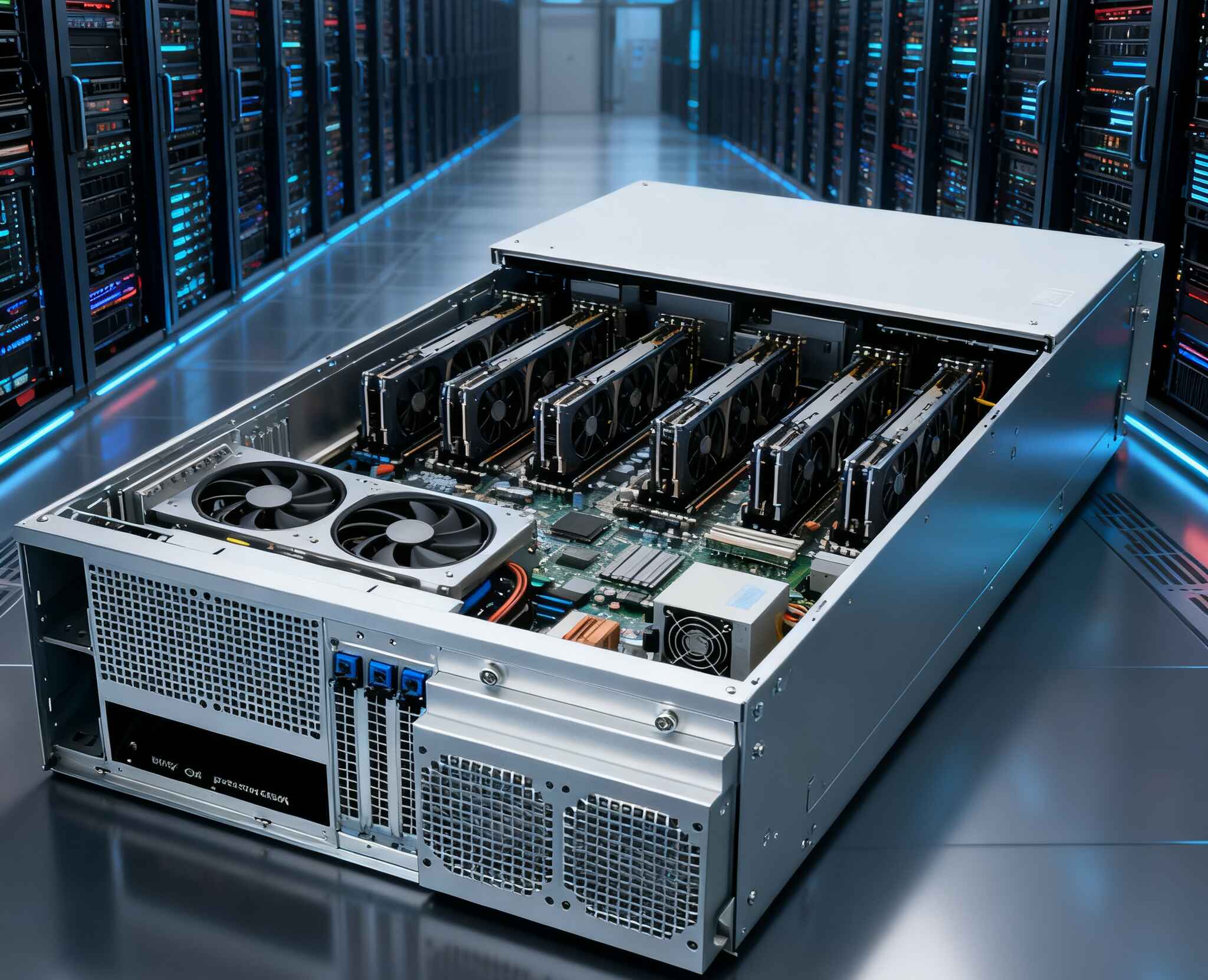
Power budget & PSU redundancy (2+2, high-efficiency)
Count GPU TDPs, add CPUs, NICs, NVMe, and fans, then add healthy headroom. In practice, 4U multi-GPU rigs like 2+2 redundant PSUs with Titanium efficiency. High line voltage reduces draw and heat. Your PDU will thank you.
Small note: spread rails to keep transient spikes calm. Good cases publish rail maps and derating curves. Ask for them.
NVMe lanes for data flow (U.2/U.3/E1.S)
Preprocessing, shuffling, and feature caching need fast local storage. Look for front NVMe bays and a backplane that can do U.2/U.3 or even E1.S. You’ll want a few drives for scratch plus a couple for high-IOPS datasets. Don’t starve the CPUs of lanes. Balance counts.
Depth, rails, and service loops (mechanics matter)
Most 4U GPU cases run deep. Check cabinet net depth, rail kit type, and cold-aisle door clearance. Leave space for power whips and fiber slack. You don’t wanna fight airflow at the rear because the door kisses the NIC heatsink, trust me.
BMC, iKVM, and Redfish/IPMI (ops hygiene)
Remote mount ISO, capture serial logs, flip fans to manual when needed. That’s normal life. A proper BMC with iKVM and Redfish/IPMI keeps on-call calm. Also ask about sensor granularity and fan curves. You’ll tune them the first week.
Quick decision matrix for a 4U GPU server case
| Decision factor | Why it matters | Practical target in 4U | IStoneCase path |
|---|---|---|---|
| Interconnect | Decides GPU-GPU bandwidth & scaling | PCIe 5.0 x16 per GPU; NVLink only if you truly need it | 4U GPU Server Case |
| CPU / topology | NUMA locality & slot mapping | Dual-root + Gen5 switch backplane | GPU Server Case |
| Networking | Cross-node throughput | OCP 3.0 slot, 200–400G NIC/DPU | Customization Server Chassis Service |
| Cooling | Sustained clocks & noise | Fan wall + air shroud; D2C optional | ISC GPU Server Case WS04A2 |
| Power | Stability under bursts | 2+2 PSUs, high efficiency | GPU Server Case |
| Storage | Data pipeline speed | 4–8× NVMe front bays | 5U GPU Server Case if you need more bays |
| Mechanics | Fit & serviceability | Depth clearance, tool-less rails | 6U GPU Server Case when GPUs get thicker |
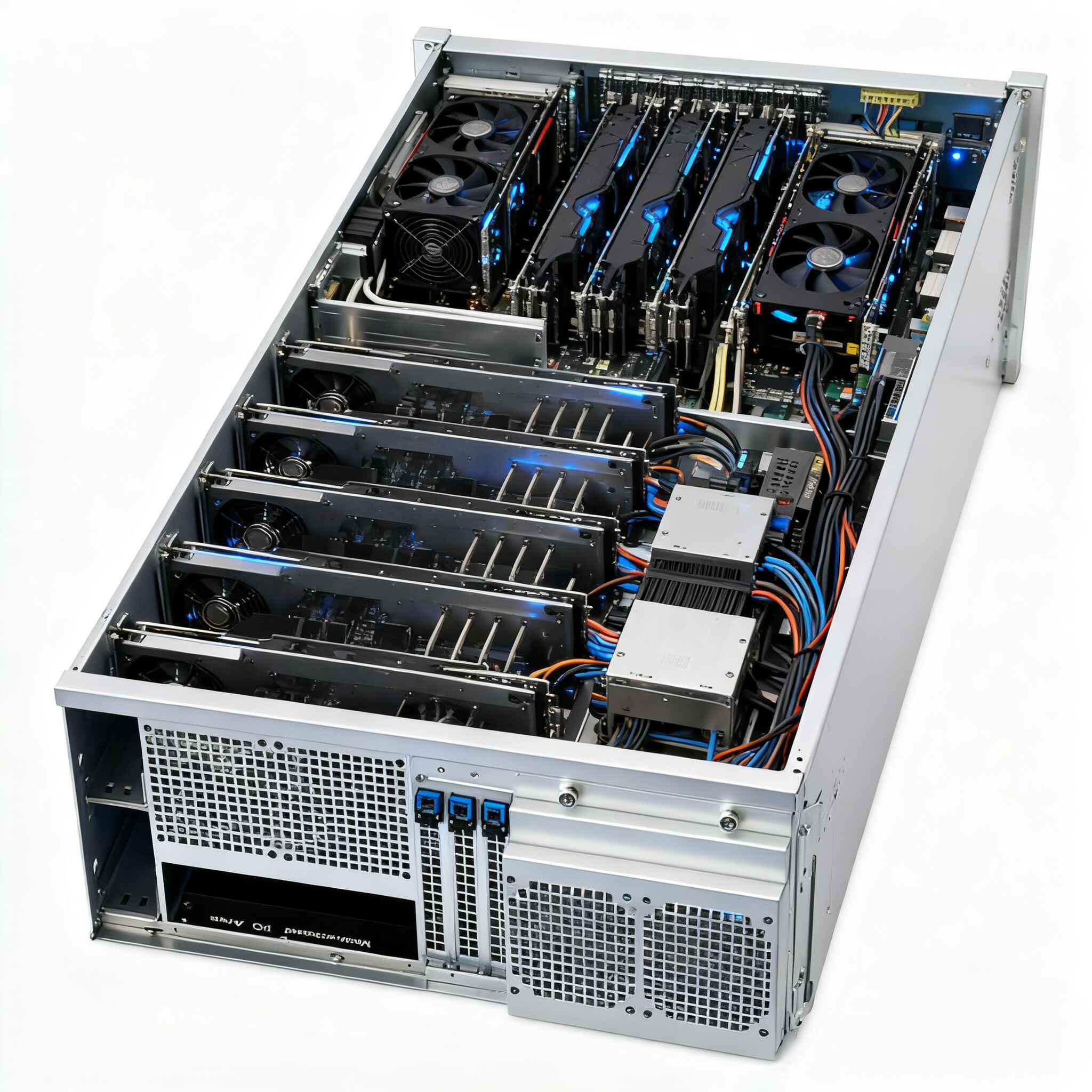
Example 4U builds & real-world workloads
| Build sketch | Interconnect | GPUs | Networking | Good for | Notes |
|---|---|---|---|---|---|
| “Classic 8-PCIe” | PCIe 5.0 x16 | 8× dual-slot | 1× 200–400G | Data parallel LLM finetune, vision models | Simple to deploy, great with 4U GPU Server Case |
| “Balanced 6-PCIe + NVMe heavy” | PCIe 5.0 x16 | 6× dual-slot | 1× 200–400G | Recsys, feature stores, tabular | More NVMe lanes for ETL bursts |
| “Hybrid SXM-lite” | NVLink (no NVSwitch) | 4× SXM | 1× 200–400G | Tight tensor parallel, small mixture-of-experts | Fewer GPUs, stronger intra-node fabric |
| “Liquid-ready 8-PCIe” | PCIe 5.0 x16 | 8× high-TDP | 2× 200–400G | Hot rooms, dense racks | Specify D2C under Customization |
Where the product lines slot in (so you can click and go)
- WS04A2 sits in the “air-first 4U with clean airflow” camp. It’s a straightforward pick for eight PCIe cards and a single fast NIC. See: ISC GPU Server Case WS04A2.
- WS06A is the roomier sibling for bulky coolers, extra front bays, or thicker cards. If your GPUs drink more power or you want easier service loops, jump here: ISC GPU Server CaseWS06A.
- Need something that doesn’t exist yet? Different fan wall geometry, odd OCP placement, a particular backplane? Use OEM/ODM and get a drawing before you buy metal: Customization Server Chassis Service.
Keyword clarity: server rack pc case vs server pc case vs computer case server vs atx server case
You’ll see four phrases in buyer notes and procurement sheets:
- server rack pc case – usually means a rackmount chassis for standard server parts.
- server pc case – often used by IT resellers for workstation-to-rack conversions.
- computer case server – clunky term, same idea, a chassis built for continuous duty.
- atx server case – implies ATX/E-ATX boards and front NVMe options in a rackmount shell.
All four can point to the same 4U family. If you’re matching SKUs, confirm PCIe slot height (FHFL), rail type, and air shroud shape. Words are fuzzy, slots are not.
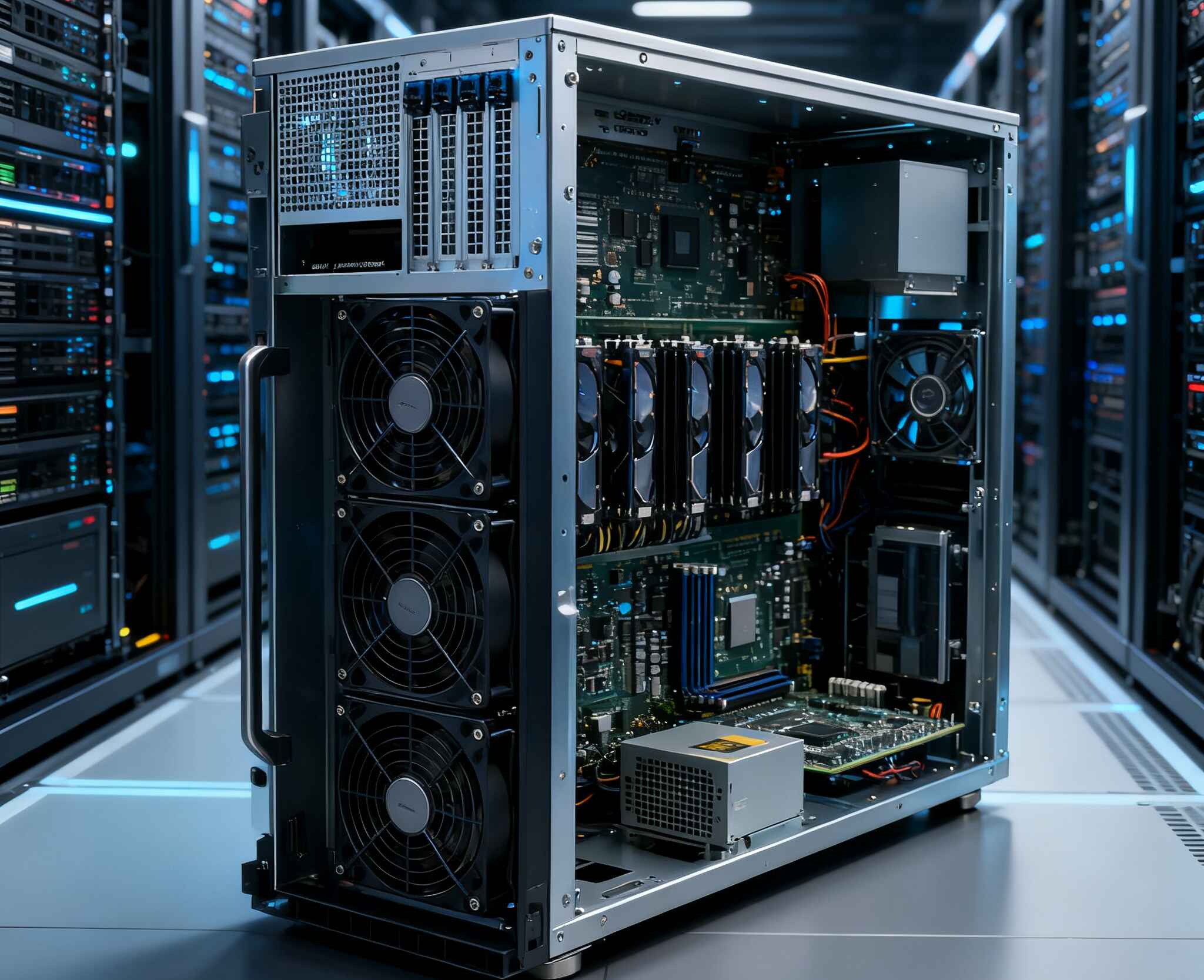
Buying scenarios (so you can map to your reality)
- Startup training PoC: 8× PCIe cards, one 200–400G NIC, a handful of NVMe. Air-cooled, dual-root. Order from 4U GPU Server Case.
- Enterprise LOB team: Two nodes per rack, shared top-of-rack fabric, strict change windows. Pick air now, leave liquid headers for later under Customization.
- Research lab with shared cluster: Mix of workloads and students. You want serviceability and rails that don’t bite. Consider the roomier 6U GPU Server Case if cards are getting chonky.
- Edge-ish AI in colo: Tight depth and hot aisles. Ask for exact depth, PDU plug type, and door clearance. If in doubt, WS06A gives breathing room.
Why IStoneCase here?
IStoneCase is set up for batch orders, OEM/ODM, and the unglam stuff that saves days later: backplane pinouts, airflow prints, rail kits that actually fit, and quick tweaks for OCP 3.0 W2. The catalog spans GPU cases, rackmount, wallmount, NAS, and ITX enclosures. That fits data centers, algo hubs, enterprises, MSPs, makers—even chassis service providers that resell white-label builds. If you need a server rack pc case or atx server case that’s tuned for GPUs, you can start with stock and get small changes fast.

